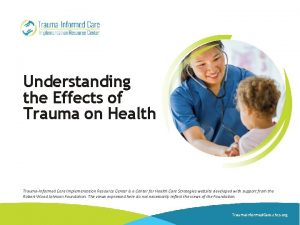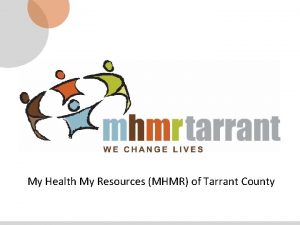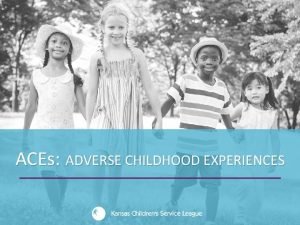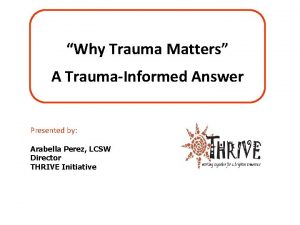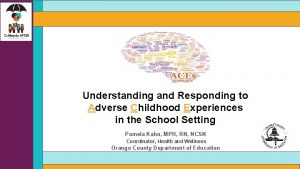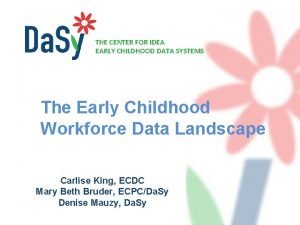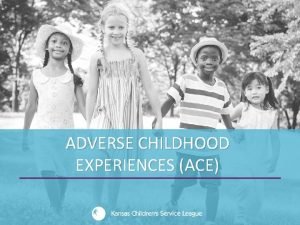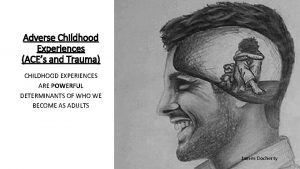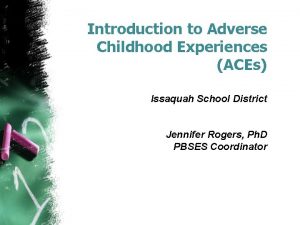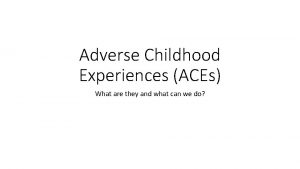ACES Adverse Childhood Experiences What are ACES Range











- Slides: 11

ACES Adverse Childhood Experiences

What are ACES? • Range of childhood experiences that can lead to • Trauma • toxic stress • Impact brain development physical development social skills and interactions mental development Emotional development Behavioral health Overall well-being

National Survey of Children’s Health (NSCH). 9 Assessed by NSCH Somewhat often/very often hard to get by on income. Parents divorced or separated Parent/guardian died Parent/guardian incarcerated or has been incarcerated Witnessed violence in the home Child is victim of violence Lived with someone mentally ill, Suicidal, or depressed Lived with anyone with alcohol or drug problem Has been treated or judged unfairly due to race/ethnicity

National and Across-State Prevalence of ACEs among Children and Youth • 46. 3% of all children have at least one Adverse Childhood Experience (38. 1%-55. 9%) • 21% have 2 or more. (15. 0% to 30. 6 %) • ACEs are also common across all income groups, though 58% of U. S. children with ACEs live in homes with incomes less than 200 percent of the federal poverty level • As income goes up, rates drop significantly

Impact on school success More than three in four (76. 3 percent) children ages 3 -5 who were expelled (“asked to stay home”) from preschool had ACEs. • Children ages 6 -17 with no ACEs are half as likely to be disengaged in school compared to those with 2+ACEs (24. 1 percent vs. 49. 0 percent).

Kansas and ACES • Research has led to the Mental Health Initiative in the Schools • Research has looked at the impact on Education in Kansas • Generational Poverty and Mobility show most impact on student learning in Kansas

Risk Factors • Risk Factors that influence success • • • Cumulative Poverty Chronic Absenteeism Suspension and Expulsion Mobility ELL Population Disabled Student Population • Percent of New Teachers


Starting with a class of 100 HS Freshmen • In Kansas, ON AVERAGE… • 86 will graduate HS • 56 will enroll in a 2 -yr or 4 -yr postsecondary institution • 46 will complete 1 year of college and return the 2 nd year, or have completed their certificate or degree • 32 will complete a postsecondary degree or credential in 6 years

How do we help children with ACEs? • Build Resilience within children • Positive family communications, routines, and habits • Supportive communities • TRUST and Relationship building • Availability of mental health care

Adverse Childhood Experiences Linkages • Adverse Childhood Experiences have been linked to • • Risky health behaviors, Chronic health conditions, Low life potential, and Early death.
 Adverse childhood experiences study
Adverse childhood experiences study Adverse childhood experiences study
Adverse childhood experiences study Schoolsworkpro
Schoolsworkpro Adverse childhood experiences study
Adverse childhood experiences study What are adverse childhood experiences
What are adverse childhood experiences Mikael ferm
Mikael ferm Middle childhood is from
Middle childhood is from Childhood age range
Childhood age range As compared to long-range forecasts, short-range forecasts
As compared to long-range forecasts, short-range forecasts Hayanil side effects
Hayanil side effects Overdriving headlights means
Overdriving headlights means 5.2 driving in adverse conditions assignment
5.2 driving in adverse conditions assignment
